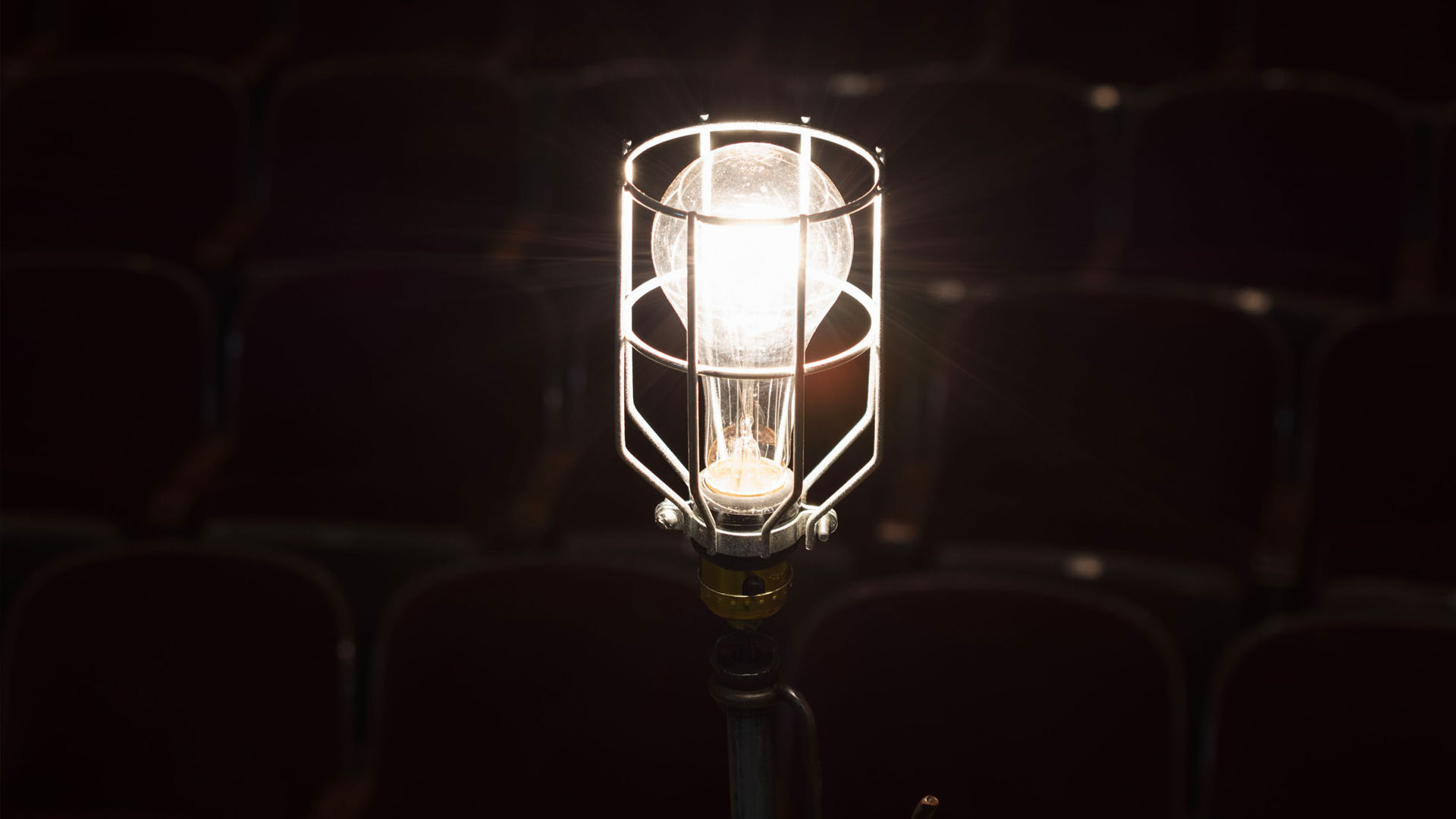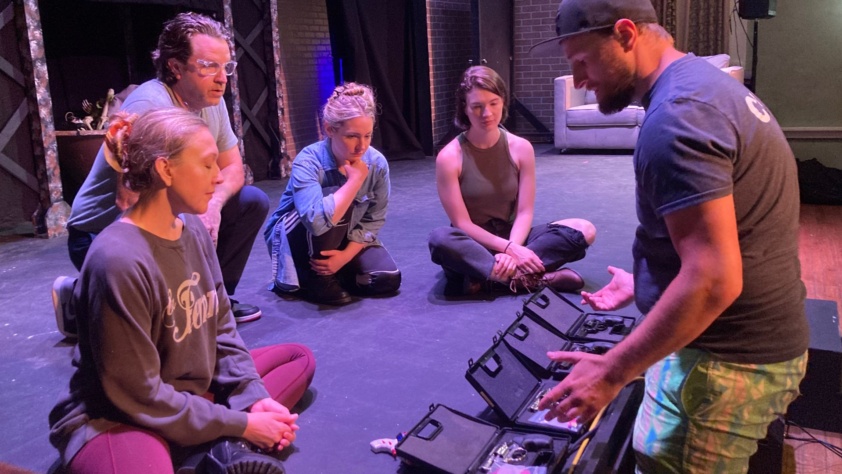[Originally published in the Star & Wave newspaper on January 18, 2022.]
By Roy Steinberg, Producing Artistic Director
Theater people call their night off the “dark night” because the lights are off when there’s no performance. Most theaters leave a “ghost light”—a single bulb— on the stage on those nights to keep people from falling off. Superstition suggests that ghost lights chase away mischievous spirits or light the way for friendly spirits. Certainly, Cape May is no stranger to ghosts.
You might think that January’s cold, short days would be dark at Cape May Stage but you’d be wrong. January gets its name from Janus, the Greek god who looks both backwards and forwards.
Looking back on theater in Cape May, various forms of theater have always been popular in the nation’s oldest seaside resort. Comic opera was a big hit in the late 19th century, drawing crowds to performances at the far end of a 1,000-foot pier that stretched far out over the beach at Decatur Street. Vaudeville caught on the 1920s, packing houses on the pier as well as at a new venue called the Auditorium on Jackson Street.
Summer stock came to town in the 1960s. Paul Barry founded the Cape May Playhouse, as well as an offshoot, the New Jersey Shakespeare Festival; and brought name actors here to perform while enjoying time at the shore, just as Cape May Stage does today. Time Magazine recognized the Cape May Playhouse under Barry as one of the top 10 summer theaters in the country.
Cape May Stage came together in 1989, when Michael Laird incorporated a fledgling theater group and joined the Actors Equity Association, a labor union comprised of professional actors and stage managers, allowing him to hire Equity members for theater productions. Laird led Cape May Stage until his untimely death in 2001. Michael Carleton succeeded him as Artistic Director.
Cape May Stage performed at various locations in its early years but Laird’s dream had always been to find a more permanent performance space. One prospect was the City-owned former Cape Island Presbyterian Church, which most recently had been the town’s welcome center (and allowed the theater to perform there after hours).
Jim Moffatt, the theater’s immediate past president, moved quickly to secure the space, signing a 25-year lease with the City in 2004 to use the building, with the option of renewing the agreement for another quarter-century. With board approval, he then spearheaded a $1.2 million fundraising campaign to restore the badly deteriorated structure and turn it into a professional theater space. He also enlisted two widely respected experts in historic preservation to oversee the effort: Tom Carroll, longtime chairman of the New Jersey Historic Trust; and Dave Clemans, a member of the Historic Preservation Committee and Open Space review board. Both provided invaluable support for the project as did area residents and the business community.
I entered the picture in 2009. Looking forward, then as now, I search for the light to guide Cape May Stage into the future. It gets dark early in January but the gleaming light of creativity is burning brightly.
January is the time we talk with designers about finding a metaphor to tell the stories that will resonate with our community. January is the month to convince name actors (and their agents) to share their artistry on our stage. It’s when we secure the rights for the intellectual property we hope to produce; and it’s when we make lists of props, lighting equipment and costumes, and order lumber and hardware, hoping that the world’s supply chain woes will be resolved by opening night.
Actors talk about finding their light so that they can be seen at their best advantage. January is when Cape May Stage finds its light so that we can be seen and appreciated locally and nationally.
Our light burns brightly as we enter the new year.



